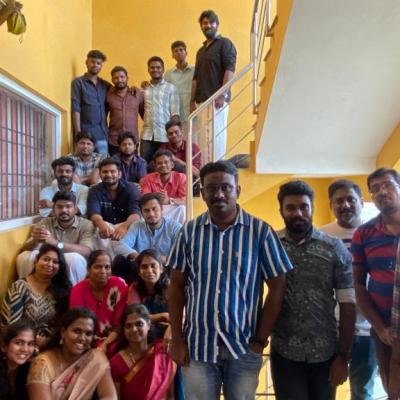Did you know that over 60% of malware infections in 2024 originated from malicious ads?
That’s a staggering statistic, and it underscores a reality many businesses overlook — the very ad networks we use to promote products and services can also be hijacked to deliver malicious payloads.
One of the most alarming examples is the latest wave of SocGholish malware campaigns. This JavaScript-based threat is leveraging compromised ad tools to target unsuspecting users. It hides in plain sight, often masquerading as legitimate software updates, luring victims into installing malicious code that can open the door to devastating breaches.
For enterprises, the message is clear: this is no longer a niche threat. Malvertising-based malware is a mainstream, high-impact risk that demands immediate attention.
Understanding SocGholish – The Malware in Disguise
SocGholish isn’t new — it’s been on the radar of cybersecurity researchers for several years — but what’s different now is its delivery method. Instead of relying solely on hacked websites or phishing campaigns, attackers are embedding malicious scripts directly into ad networks and digital marketing platforms.
These platforms are inherently trusted by users. People are accustomed to seeing ads on reputable sites, so their guard is often down. This trust is precisely what cybercriminals are exploiting.
The lifecycle of a SocGholish attack typically looks like this:
- Compromised Ad Network – Attackers gain access to legitimate ad tools or third-party ad servers.
- Malicious Code Injection – They insert JavaScript payloads into ad creatives.
- User Redirection – When someone clicks the ad (or in some cases, simply loads the page containing the ad), they’re redirected to a fake update page.
- Social Engineering Hook – The page convincingly mimics a browser or software update prompt.
- Payload Delivery – The “update” is actually a malware installer, often leading to ransomware or other serious intrusions.
Why the Surge in 2024 and 2025?
Several factors have contributed to SocGholish’s rise in recent years:
- The Digital Ad Boom – Online ad spending has grown to over $740 billion globally, giving attackers a massive attack surface.
- Supply Chain Complexity – Ad networks are interconnected, with multiple layers of vendors, making it harder to vet every component.
- Remote Work Environments – More employees use personal devices on unsecured networks, increasing exposure.
- Low Detection Rates – Malvertising attacks often don’t trigger traditional antivirus alerts until the malware executes.
Key Stats You Need to Know:
- Malvertising-based attacks increased 35% year-over-year in 2024.
- Over 40% of infected organizations didn’t detect the breach until weeks or months later.
- Ransomware demands linked to SocGholish infections often exceed $250,000.
- In over 60% of cases, the infection chain began with an ad impression — not even a click.
The Business Impact of SocGholish
For enterprises, SocGholish represents a triple threat:
- Data Breaches – Once inside, attackers can exfiltrate sensitive customer records, financial data, and proprietary information.
- Financial Losses – Beyond ransom demands, companies face potential fines under GDPR, CCPA, and the Indian DPDP Act.
- Operational Disruption – Critical systems may be encrypted or taken offline, halting business operations for days or weeks.
A 2024 Ponemon Institute report found that the average cost of a malware-caused breach is $4.45 million. With SocGholish, these costs often spike due to delayed detection.
How SocGholish Operates – In Depth
Let’s take a closer look at the attack chain:
1. Entry via Malicious Ads
Cybercriminals compromise the backend of an ad distribution network. The malicious script is then served to millions of users visiting legitimate websites.
2. Silent Redirection
When a user’s browser loads the infected ad, it silently redirects to a phishing-style page that appears to be a browser update page. The sophistication of these pages is striking — complete with branding, localized language, and even progress animations.
3. Social Engineering at Scale
The victim is told that without this “critical update,” their browser may be at risk. In reality, installing it gives attackers a foothold.
4. Backdoor Establishment
Once installed, SocGholish sets up persistence, allowing attackers to return later to steal credentials, deploy ransomware, or move laterally inside the network.
Industry Examples – What We’ve Seen at DigiAlert
At DigiAlert, we’ve handled multiple incident response cases involving SocGholish.
- Case 1 – Financial Services Sector: A client was hit after an employee visited a popular business news site. Within 48 hours, privileged account credentials were stolen. Our detection tools flagged unusual outboundconnections to known malicious IP addresses, enabling containment before ransomware execution.
- Case 2 – Manufacturing Industry: An employee working remotely encountered a fake Chrome update prompt. The infection went unnoticed for almost three weeks, allowing attackers to steal sensitive design schematics worth millions.
These cases highlight the need for faster detection and continuous monitoring.
Broader Cybersecurity Trends
SocGholish isn’t operating in isolation — it’s part of a broader shift in how cybercriminals approach infection:
- Malvertising as a Service (MaaS) – Just like ransomware-as-a-service, some threat actors now rent out compromised ad accounts.
- AI-Powered Social Engineering – Attackers are using AI tools to create more convincing fake update messages.
- Remote Worker Targeting – Home routers, outdated antivirus software, and shared devices all increase risk.
How Enterprises Can Protect Themselves
If your organization wants to stay ahead of threats like SocGholish, you must adopt a layered defense approach. At DigiAlert, our recommendations include:
1. Continuous Digital Asset Monitoring
Detect and block malicious ads before they impact employees or customers.
2. Employee Awareness Training
Equip staff to recognize social engineering tactics and suspicious prompts.
3. Proactive Threat Hunting
Don’t wait for an alert — actively search for indicators of compromise, such as unusual network activity or unauthorized software installations.
4. Policy-Based Update Management
Ensure all updates are pushed through official IT channels, not user-initiated downloads.
5. Network Segmentation
Isolate critical infrastructure to contain any potential spread.
Final Thoughts – The Urgency of Action
The days of thinking “malware comes from shady websites” are over. Today, even ads on top-tier, reputable domains can deliver malicious code directly to enterprise systems. SocGholish is particularly dangerous because it exploits human trust and technical blind spots simultaneously. Left unchecked, it can quietly compromise an organization and open the door to devastating ransomware attacks.
2025 will see more sophisticated malvertising campaigns, wider use of AI-driven lures, and a growing list of victims. The only way to stay safe is through a proactive, multi-layered security posture.
Call to Action
Is your organization protected against ad-delivered malware like SocGholish?
- Follow DigiAlert and VinodSenthil for the latest threat intelligence and cyber defense strategies.
- Comment below – Have you encountered SocGholish or similar threats in your industry?
- Learn how we help – Visit our website to explore our Digital Risk Monitoring Solutions.







